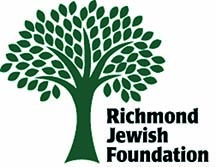 As the Jewish community’s primary, trusted, and expert resource for planned giving and endowments, it is a core part of RJF’s mission to help you meet your philanthropic goals. To that end, this month we wanted to relay some encouraging tips for your 2022 charitable giving plans.
As the Jewish community’s primary, trusted, and expert resource for planned giving and endowments, it is a core part of RJF’s mission to help you meet your philanthropic goals. To that end, this month we wanted to relay some encouraging tips for your 2022 charitable giving plans.
The following message was sent in RJF’s most recent email newsletter. For more information about signing up for RJF’s emails, setting up a fund, or to discuss best ways to meet your philanthropic goals, please reach out to Jesse Feld at jesse@rjfoundation.org or by calling (804) 545-8656.
A new year provides an excellent opportunity to consider plans for charitable gifts in 2022. These gifts could include an IRA charitable rollover, a gift of cash or a gift of appreciated stock or land.
- IRA Charitable Rollover — The IRS refers to the IRA charitable rollover as a qualified charitable distribution (QCD). An individual over age 70½ is permitted to make a transfer directly from his or her IRA custodian to a qualified charity.
The transfer is not included in taxable income. If the IRA owner is over age 72, the distribution may fulfill part or all of your required minimum distribution (RMD).
Because many individuals have invested their IRAs in stocks, bonds or other securities, it may be necessary to exchange the IRA stock or bond accounts for a money market fund prior to the distribution.
Most custodians require a QCD to be paid from a money market account or similar fund. Because the equities markets are at record levels, some individuals may choose to transfer funds from equities to a money market fund early in the year to prepare for their IRA charitable rollover.
There are some limits for the IRA charitable rollover. The IRA owner must be at least age 70½ and the maximum transfer in one year is $100,000. The transfer must be to a qualified exempt charity and may be for a designated purpose or field of interest fund.
However, it may not be to a donor advised fund (DAF) or supporting organization. In addition, it may not be for a charity dinner or other event that involves a partial benefit to the donor. The entire QCD must be for a qualified charitable purpose.
- Gifts of Cash — Individuals who itemize deductions may deduct 2022 gifts of cash up to 60% of their contribution base, which is usually your adjusted gross income (AGI).
This is a change from last year when the maximum deduction limit was temporarily increased to 100% of AGI. While the 60% limit is substantial, some generous individuals give more than this and may carry forward and deduct the excess gift amounts during the next five years.
- Gifts of Stock or Land — With substantial increases in value for both equities and real property, many donors will find that a 2022 gift of appreciated property is attractive. A gift of appreciated stock or land provides two benefits for the donor.
First, the donor may receive a charitable contribution deduction for the fair market value of the stock or land.
Second, the charity is tax-exempt and therefore the donor is able to bypass tax on the capital gain. If the donor purchased stock two years ago for $10 per share and it is now worth $50 per share, the donor would pay capital gains tax on $40 if he or she sold the stock.
However, by giving the stock to charity, the donor may receive a deduction for the $50 in value and bypass the tax on the $40 of potential gain. Because the donor is receiving both the deduction and capital gain bypass benefits, this type of gift is permitted to 30% of AGI.
Once again, if the value is in excess of this limit, it may be carried forward for five years. For example, Mary Smith has adjusted gross income of $100,000 this year and makes a gift of appreciated stock with a fair market value of $40,000.
She is able to deduct $30,000 and carry forward $10,000 and deduct that amount over the next five years.




